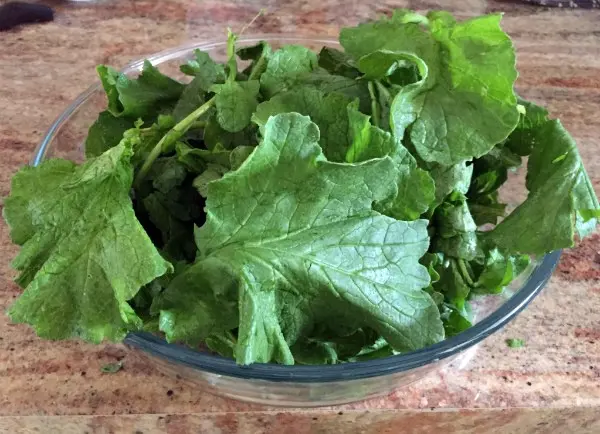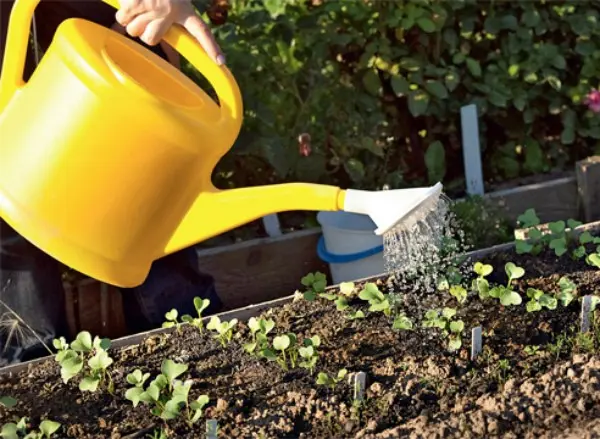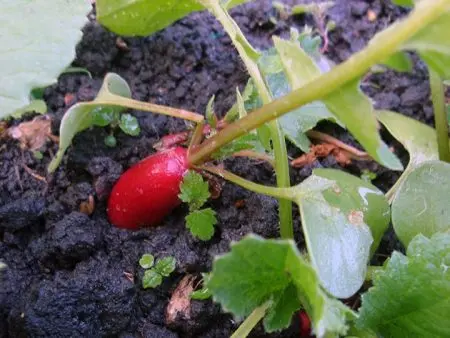Contents
It is believed that anyone can grow a radish, even if for the first time in his life he decided to do a dacha business. This unpretentious culture gives us the first spring vitamins, because we make the very first salad from our garden from radishes and greens – it is with them that we see off spring beriberi and restore strength after winter. Almost all summer residents grow this vegetable, but the trouble is that sometimes it’s not the root crop that grows, but the tops of the radish. Let’s try to figure out why this happens.
Features of growing radishes
Radishes are grown on nutritious light soils, neutral, very slight acidification can be tolerated. It loves moisture and sun, so it is sown in open sunny areas, it is better if the radish is protected from strong winds. Radish grows at an air temperature of +10 degrees, but can easily survive frosts down to -2 degrees. Radish is called a plant of short daylight hours, because it is satisfied with a day length of 10–11 hours, if daylight hours last longer, then radish leaves grow better than root crops.

This vegetable gives an excellent harvest a month after sowing, it does not require special care, which is why gardeners love it. They take care of him traditionally – feed, water, loosen the ground. Moreover, the first point is often dispensed with if the site has good fertile land. It often happens that summer residents harvest crops at the beginning of summer, and then in the fall they again feast on the crispy, spicy pulp of the root crops of this rapidly growing vegetable.
Everything seems to be so simple, but why does it sometimes happen that all the power of a radish is spent on the growth of tops, shooting, and not on the formation of root crops?
Causes
If the radish goes to the arrow, its palatability will noticeably decrease, which is why this should not be allowed. And it happens that beautiful lush greenery grows, but the root crop does not grow.

By the way, do not rush to throw such useless, but lush bushes into the compost pit. They contain many useful substances, in particular, a high content of vitamins. Usually they are used for livestock feed, and the first tender greens can be included in salads.
Some summer residents make very healthy salads at the beginning of summer from radish, gooseberry, mulberry leaves, while they have a lot of vitamin C.
But we do not grow radishes to eat their leaves, why don’t root crops grow? There may be several reasons for this.
Violation of the terms of sowing
If a radish has been sown since autumn (and many do so – they are sown before winter), then the April sun will make it germinate, and the earth moist after the snow melts will be the best growth condition. The result will be a wonderful harvest as early as May.

And in the spring, radishes should be sown when the ground thaws and the air temperature rises to +10 degrees. In most of the country, this happens in late March or early April. It will grow beautifully until the daylight hours increase to 12-13 hours, and the summer heat begins. After this, the root crop is no longer worth waiting for, the plant goes into the arrow under such conditions. That is why it is impossible to delay sowing – if you are late and sow in May, the radish will rush to shoot. The timing of sowing is very important for the harvest of radishes.
Unsuitable soil and fertilizers
Radish loves loose sandy soils, if the earth is too dense, then the roots will not be able to fully develop, they will not have enough air and nutrition. If the soil is too heavy in the garden, it is worth adding sand and wood ash, then dig it up well. Usually, the beds are fertilized before sowing with compost, humus, and mineral fertilizers. It is better to do this in the fall, but you can also fertilize in the spring just before sowing, dig the site again, level it, water it, and then sow it.
But here it is important not to overdo it, too much nitrogen can provoke lush green growth and early shooting. It is better to make compost and superphosphate. Manure contains a lot of nitrogen, you can’t fertilize fresh at all, only humus should be applied before sowing, but then there should be little nitrogen among mineral fertilizers, but more potassium and phosphorus.

Many summer residents in the spring (or from autumn) apply mineral fertilizers to the soil, and then, after the emergence of shoots, they still water it with diluted (very strongly) slurry. This is permissible only on depleted infertile lands.
The soil should be fertilized, but without an excess of nitrogen.
Wrong site selection
Radishes need to be grown in open sunny beds, it is desirable to protect them from the wind, which dries out (as they say, “weathers”) the earth. Experienced gardeners change the place for it every year and do not sow it where related crops grew in the previous year – radish, cabbage or turnip. It is better to grow radishes after potatoes, onions or tomatoes. Some owners plant it among tomatoes, which is fine, as long as the tomatoes do not form a large shade. When determining a place for a radish, you need to remember the rules of crop rotation.
Incorrect watering
A moisture-loving crop is sown in moist soil, and then it is lightly tamped down so that each seed is surrounded by moist soil, and not air. Crops, and then seedlings, are watered from dishes with a divider, it is good if it is a fine sieve. Growing radishes are watered frequently, every 2 or 3 days, and in hot, dry weather, daily. Better to do it in the evening.

The roots grow up to 30 cm deep, so you need to water not only often, but also abundantly so that the earth gets wet to the desired depth. If only the upper few centimeters of the earth are moistened, then the plant will not fully eat, which means that it will not “waste time” growing the root crop, but will immediately rush to release the arrow. Watering should be correct, that is, sufficient for growth.
Other reasons
It happens that a summer resident burdened with chores forgets to loosen the ground around the plant. For radishes, this can be fatal. Frequent watering will compress the earth, very soon the roots will not receive any moisture or air. To prevent this from happening, you need to fluff up the soil more often.
First, the earth is loosened up to a depth of 3 centimeters, then as the plant grows, the depth is increased to 6 centimeters. Loosening the earth is of great importance for the normal formation of the root crop.
Another important condition that an inexperienced summer resident can forget about is the optimal area for each plant. In order for a radish to grow a large juicy root crop, there must be free space between it and neighboring plants. That is why immediately after germination (on the 5th or 6th day) the sprouts break through, leaving the strongest at a distance of 4 cm from each other. The thinning procedure can then be repeated if, according to the variety description, large root crops are assumed.
Video “Secrets of growing radishes”
This small but informative video will tell you about the timing of planting radishes and demonstrate the planting process.










